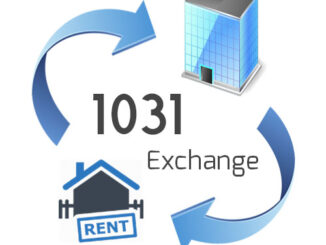
When it comes to selling an investment property, real estate investors often find themselves faced with a crucial decision: should they pursue a 1031 exchange or opt for traditional selling? Both options have their advantages and considerations, and choosing the right approach depends on various factors specific to each investor’s situation and goals. In this article, we will explore the differences between a 1031 exchange and traditional selling, empowering you to make an informed decision that aligns with your objectives.
A 1031 exchange, also known as a like-kind exchange, allows investors to defer capital gains taxes by reinvesting the proceeds from the sale of an investment property into another like-kind property. This option offers significant tax advantages, as the capital gains tax liability is postponed rather than immediately realized. By deferring taxes, investors can keep their capital working for them and potentially acquire properties with higher income potential or in more desirable locations.
On the other hand, traditional selling involves selling an investment property and paying capital gains taxes on the realized profit. This option provides immediate access to the proceeds from the sale, allowing investors to utilize the funds as they see fit. However, it also entails the burden of paying taxes on the capital gains, which can impact the overall profitability of the transaction.
One crucial aspect to consider when deciding between a 1031 exchange and traditional selling is the investor’s long-term goals. If an investor aims to grow their real estate portfolio and maximize returns over time, a 1031 exchange can be an attractive option. By deferring taxes, investors can preserve their capital and reinvest it into potentially more lucrative properties. This strategy allows for the compounding of wealth and can significantly impact an investor’s long-term financial success.
Conversely, if an investor’s primary objective is to access the proceeds from the sale for personal use or alternative investments, traditional selling may be the preferred route. Traditional selling provides immediate liquidity and flexibility in allocating the funds according to the investor’s needs and preferences.
Another factor to consider is the investor’s risk tolerance. Engaging in a 1031 exchange requires identifying and acquiring a replacement property within strict timelines. This process may involve certain risks, such as finding suitable properties, negotiating transactions, and potential market fluctuations. Traditional selling, on the other hand, offers a more straightforward and expedient process, eliminating the potential uncertainties associated with the acquisition of replacement properties.
Additionally, investors should evaluate their tax circumstances and consult with tax professionals to fully understand the implications of each option. While a 1031 exchange provides tax deferral benefits, it is essential to consider the eventual tax liability when the replacement property is sold in the future. Understanding the short-term and long-term tax implications can help investors make an informed decision that aligns with their tax planning strategies.
In conclusion, the choice between a 1031 exchange and traditional selling depends on a range of factors, including an investor’s long-term goals, liquidity needs, risk tolerance, and tax circumstances. Careful evaluation of these factors, along with expert guidance from real estate professionals and tax advisors, is crucial in determining which option is the right fit. Whether you opt for the tax advantages and potential portfolio growth of a 1031 exchange or prioritize immediate access to funds through traditional selling, making an informed decision will ensure you maximize the benefits of your investment and align with your overall financial objectives.
#1031ExchangeVsTraditional #TaxDeferredInvesting #InvestmentStrategies #PortfolioOptimization #ProfessionalGuidance



